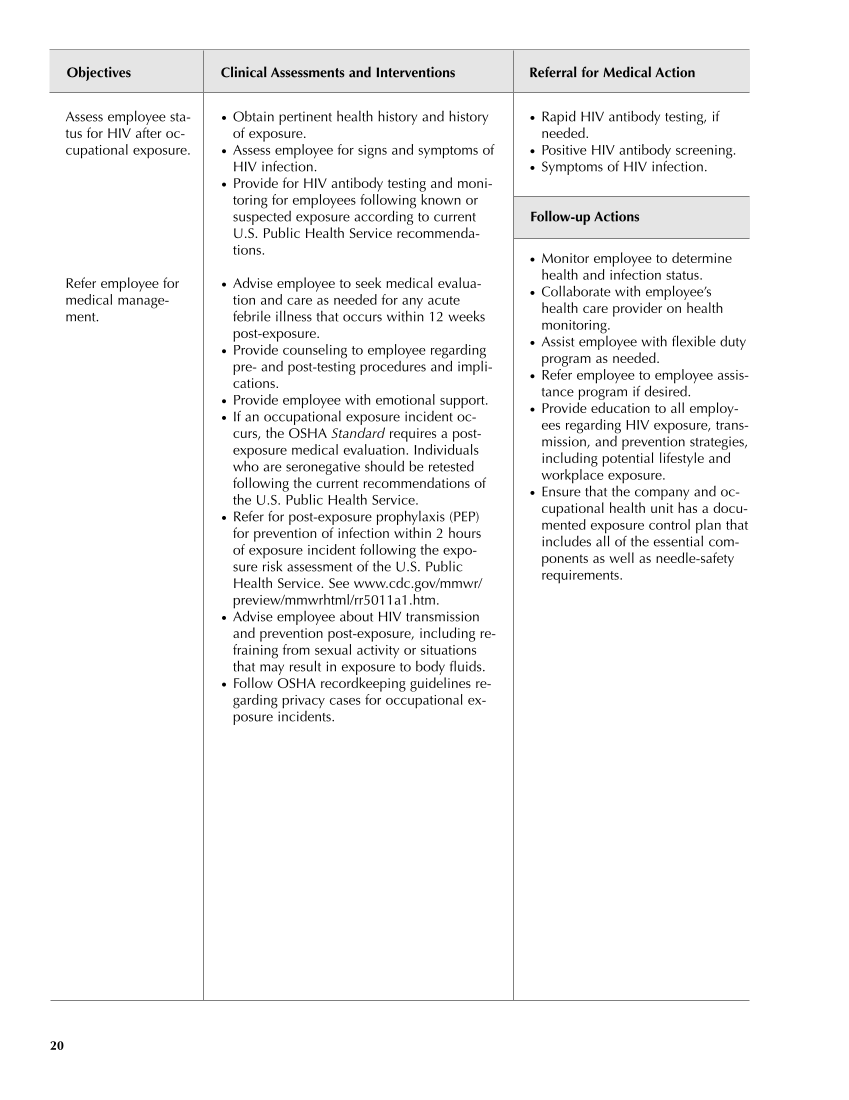Objectives Clinical Assessments and Interventions Referral for Medical Action 20 ● Rapid HIV antibody testing, if needed. ● Positive HIV antibody screening. ● Symptoms of HIV infection. Follow-up Actions ● Monitor employee to determine health and infection status. ● Collaborate with employee’s health care provider on health monitoring. ● Assist employee with flexible duty program as needed. ● Refer employee to employee assis- tance program if desired. ● Provide education to all employ- ees regarding HIV exposure, trans- mission, and prevention strategies, including potential lifestyle and workplace exposure. ● Ensure that the company and oc- cupational health unit has a docu- mented exposure control plan that includes all of the essential com- ponents as well as needle-safety requirements. Assess employee sta- tus for HIV after oc- cupational exposure. Refer employee for medical manage- ment. ● Obtain pertinent health history and history of exposure. ● Assess employee for signs and symptoms of HIV infection. ● Provide for HIV antibody testing and moni- toring for employees following known or suspected exposure according to current U.S. Public Health Service recommenda- tions. ● Advise employee to seek medical evalua- tion and care as needed for any acute febrile illness that occurs within 12 weeks post-exposure. ● Provide counseling to employee regarding pre- and post-testing procedures and impli- cations. ● Provide employee with emotional support. ● If an occupational exposure incident oc- curs, the OSHA Standard requires a post- exposure medical evaluation. Individuals who are seronegative should be retested following the current recommendations of the U.S. Public Health Service. ● Refer for post-exposure prophylaxis (PEP) for prevention of infection within 2 hours of exposure incident following the expo- sure risk assessment of the U.S. Public Health Service. See www.cdc.gov/mmwr/ preview/mmwrhtml/rr5011a1.htm. ● Advise employee about HIV transmission and prevention post-exposure, including re- fraining from sexual activity or situations that may result in exposure to body fluids. ● Follow OSHA recordkeeping guidelines re- garding privacy cases for occupational ex- posure incidents. Guideline continues on next page
Purchased from OEM Press by (ge corporate access). (C) 2013 OEM Health Information, Inc. All rights reserved.












































































































































































































































































































































































































































